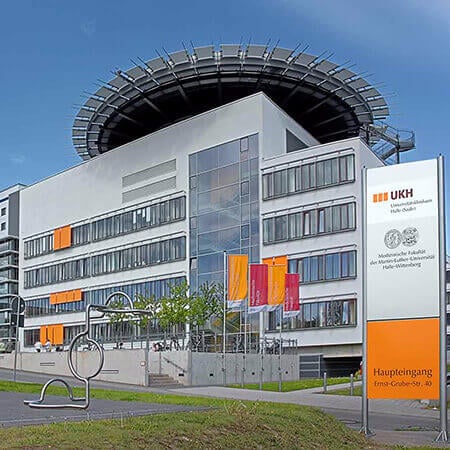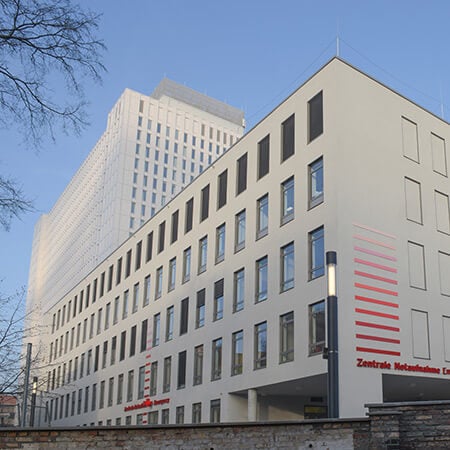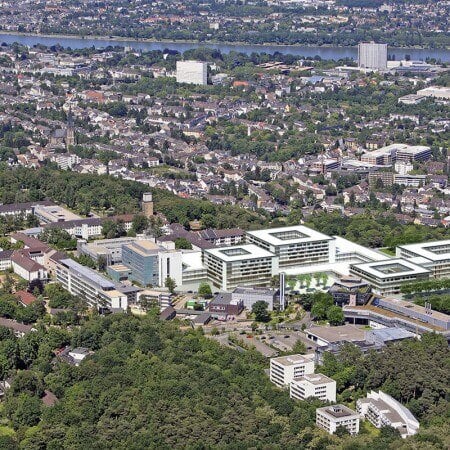Such pathology as soft tissue tumors is often detected in children as well as in adults, and sometimes it happens to be giant cell fibroblastoma (GCF).
Content
- What you need to know about giant cell fibroblastoma (GCF)
- About dermatofibrosarcoma protuberans
- Symptoms
- Factors that cause giant cell fibroblastoma development
- Common localization
- Diagnostics
- Treatment of giant cell fibroblastoma: surgery
- Radiotherapy and targeted therapy
- Prognosis
- Where to undergo treatment of giant cell fibroblastoma abroad?
- The cost of treatment of giant cell fibroblastoma
- How to get treatment of giant cell fibroblastoma abroad during a lockdown?
What you need to know about giant cell fibroblastoma (GCF)
Giant cell fibroblastoma (GCF) is a potentially-malignant neoplasm. Being benign primarily, sometimes a giant cell fibroblastoma (GCF) can transform into cancer. This is a tumor of fibrous tissue that occurs in young and middle-aged children and adults.
At the initial stage, the pathology represents a nodule on the skin or under the skin. It consists of a yellowish, sometimes gray, mass, which not differs significantly from the surrounding tissue.
When conducting a histological examination, it can be seen that giant cell fibroblastomas are distinguished by the presence of polymorphic (prone to mutation) cells without ordered arrangement. Due to research, it is known that giant cell fibroblastoma appears to be multinucleated, which means that one cell has more than one nucleus.
The neoplasm is detected in the various areas of the head, neck, arms, and legs, but those areas are defined by the narrow pseudovascular spaces called angiectoid spaces.
The spaces make the neoplasm akin to dermatofibrosarcoma protuberans. By the presence of such similarity, giant cell fibroblastoma may be referred to as a subtype of dermatofibrosarcoma protuberans. The process of tumor development is slow, but despite the absence of a malignant form, the neoplasm can spread to neighboring healthy tissues through metastasis formation, like dermatofibrosarcoma protuberans, which is considered extremely dangerous.
About dermatofibrosarcoma protuberans
Why even talk about dermatofibrosarcoma protuberans? It is known that dermatofibrosarcoma protuberans and giant cell fibroblastoma belong to one pathological category. Hybrid lesions that have the features of both tumors occur sometimes. Researchers believe that dermatofibrosarcoma protuberans and giant cell fibroblastoma are somewhat alike. For instance, giant cell fibroblastoma often recurs as dermatofibrosarcoma protuberans, and, in turn, dermatofibrosarcoma protuberans very often recurs as giant cell fibroblastoma. So, it is important to understand the differences and similarities of both tumors in order to elaborate an effective treatment regimen.
Giant cell fibroblastoma and dermatofibrosarcoma protuberans are both soft tissue tumors, but the most significant difference is that dermatofibrosarcoma protuberans is much more often prone to metastasis formation.
Interestingly enough, there are practically no histological similarities between the two, and dermatofibrosarcoma protuberans does not have multinucleated cells in its structure. The main similarity between two tumors is the presence of the same translocation of gene.
Symptoms
The specificity of cancer manifestations is resulting from the localization of the neoplasm. However, the initial symptom of the pathology is a hard-like neoplasm on the skin or under the skin.
The progression of the pathology eventually leads to disruptions in the functioning of internal organs, which will, eventually, negatively affect healthy tissues of the body.
The neoplasm is prone to a significant increase in volume. With complications, life-threatening bleeding occurs. Therefore, when the first symptoms are noticed, a patient should seek medical attention immediately, as the treatment delay can lead to irreversible health consequences or even death.
Factors that cause giant cell fibroblastoma development
This type of cancer pathology develops mainly in children under the age of ten, regardless of gender, race, and geographic location. Tumor causative factors include genetic mutations, inflammation or damage to the skin, exposure to radiation, hormonal disorders, and diabetes mellitus.
Common localization
The tumor is commonly found in the areas of the head, neck, shoulders, chest, arms, legs and thighs, belly and back, or in several areas at once.
Statistically, the belly, chest, and back are the location of 40-65% of tumor cases. In 20-30% of cases it is found on the skin of the arms and legs. In 10-15% of cases, it is found in the head and neck area.
Diagnostics
Patients undergo a preliminary consultation with doctors, where the general health condition is evaluated and medical history is assessed. A biopsy is performed – a sample of the tumor is further taken to a laboratory, where the tumor genetic and immunohistochemical peculiarities are identified. Imaging diagnostic methods such as ultrasound scan, X-ray, CT scan, and MRI are also used.
Treatment of giant cell fibroblastoma: surgery
The optimal treatment for giant cell fibroblastoma is surgery. And the most common method of surgery for giant cell fibroblastoma (GCF) is Mohs surgery.
It allows doctors to excise the lesion within the healthy tissues and remove the maximum amount of cancer cells while sparing the healthy tissues. Besides, the surgical procedure is painless as it is performed under the local anesthesia, with almost no scar left.
However, some patients may benefit more from the conventional surgery.
Anyhow, the individual peculiarities of the diagnosis can complicate the surgery. First, there’s uneven tumor growth, due to which some cancer cells may be distant. Thus, the border of the tumor itself is unclear. Second, the tumor often recurs after surgery, primarily due to possible mistakes in clinical detection of the tumor borders before the resection.
If the neoplasm is detected at an advanced stage or when surgery is suspected to be ineffective, radiation therapy or drug therapy (specifically, targeted therapy) are used. In some cases, a giant cell fibroblastoma cannot be completely excised due to the peculiarities of its localization and the nature of the affected underlying tissues. For instance, when a neoplasm is located close to a joint and bone.
In such cases, radiation therapy is used. However, the effectiveness of this method in giant cell fibrosarcoma may vary. In some cases, it can lead to tumor shrinkage, while in other cases it can stimulate more aggressive growth.
Radiotherapy and targeted therapy
Luckily, giant cell fibroblastoma (GCF) is quite sensitive to radiation. Research shows that radiation therapy is effective in the majority of patients. Also, radiation therapy tends to prevent giant cell fibroblastoma (GCF) from recurrence.
It should be noted that giant cell fibroblastoma (GCF) recurs much less often when the radiotherapy method is used not as an independent treatment, but as a part of complex therapy that is usually applied after surgery. Besides, the statistics indicate that the risk of tumor recurrence is lower after radiation therapy than after a surgical treatment.
Targeted therapy causes a tumor to decrease in size and reduces the number of cancer cells significantly, but it cannot eliminate the tumor completely.
Prognosis
Relapses can happen after treatment, therefore, long-term observation is indicated for all patients. During several years after the completion of the treatment, patients undergo examination every 3-6 months. After that, diagnostic examinations are carried out annually. In the presence of recurrence, more frequent examinations are required.
The prognosis of the disease is influenced by the stage of the pathological process, the size and location of the tumor, the age, and the health condition of the patient. In more than 50% of cases, a timely treatment can cure the disease.
Where to undergo treatment of giant cell fibroblastoma abroad?
We recommend the following hospitals for treatment of giant cell fibroblastoma abroad:
- Vivantes Neukolln Hospital Berlin, Germany
- University Hospital Ulm, Germany
- Medias Cancer Clinic Burghausen, Germany
- University Hospital Freiburg, Germany
- Rambam Health Care Campus Haifa, Israel
- Medicana International Ankara Hospital, Turkey
- Memorial Bahcelievler Hospital Istanbul, Turkey
- Samsung Medical Center Seoul, South Korea
The treatment in hospitals is usually carried out by a multidisciplinary team with the involvement of specialized experts located in the same building, which allows specialists to interact closely. Thus, decisions on adjusting the treatment plan are made without delay.
The cost of treatment of giant cell fibroblastoma
The prices depend, first of all, on the therapeutic techniques chosen for your clinical case, and the pricing policy of the hospitals.
Let’s look at the prices for giant cell fibroblastoma resection in different countries.
The cost of treatment with tumor resection in Germany is 10,830-18,353 EUR.
The cost of treatment with tumor resection in Israel is 15,471-15,900 EUR.
The cost of treatment with tumor resection in Turkey is 6,982-14,447 EUR.
The cost of treatment with tumor resection in South Korea is 14,450-15,382 EUR.
When patients arrive in the hospital and start their treatment, procedures that weren't listed in the treatment program may be necessary. Thus, the cost of treatment changes.
To find out the information on the overall cost of treatment abroad, you may leave the request on the Booking Health website.
How to get treatment of giant cell fibroblastoma abroad during a lockdown?
After analyzing data from 70 countries, the estimated several million possible surgical procedures to remove malignant tumors have been canceled in hospitals due to COVID-19.
Radiation therapy and chemotherapy courses were also disrupted. Generally, the treatment has often been postponed, in cases when it shouldn’t be.
There’re also patients, who have not been diagnosed with cancer yet. Because of the fear of contracting the coronavirus, many, even those who are already feeling unwell, avoid visiting doctors. Besides, there are limited opportunities to obtain a referral for examinations that allow early detection of cancer.
You don’t have to experience the disruption of your treatment anymore, because with Booking Health treatment abroad is an available option for you.
In addition to making medical tourism convenient, Booking Health also helps you to resolve issues with obtaining a medical visa – something that many people who want to undergo treatment abroad face. The problems usually arise in the form of a closed embassy or a decline of a medical visa request. In any scenario, Booking Health knows what to do, so that the result would be entering the country with confidence.
If you have any questions about how the treatment will be organized or if you need assistance in choosing the hospital, or anything else related, leave a request on the Booking Health website.
Authors: Dr. Nadezhda Ivanisova, Dr. Sergey Pashchenko




















